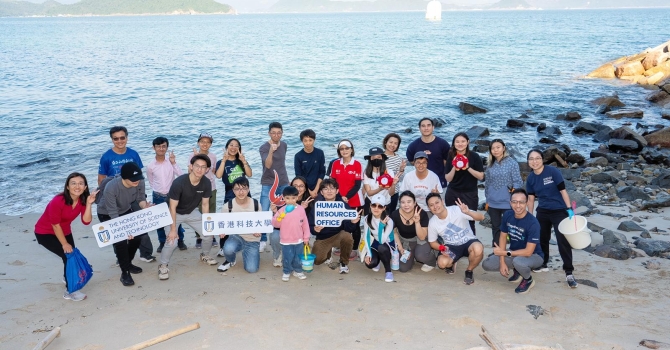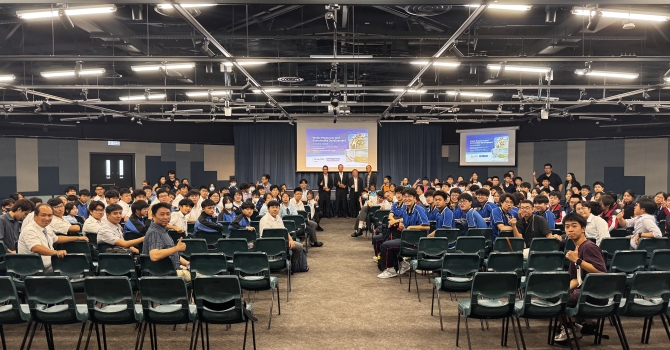Where are Innovation Building’s Acacia Trees?
The Story of Trees to Wood Paneling
The much-loved mature tree grove across from Shaw Auditorium made way for the construction of the new Martin Ka Shing Lee Innovation Building in late 2022. The new building will showcase HKUST’s commitment to sustainability while providing best-in-class facilities for research and collaboration.
Of the 97 trees on the original site, 34% were retained, and 66% were felled attributing to its mostly poor form and health condition, as well as its low amenity value and anticipated survival rate after transplant, as approved by Lands Department. Of the felled trees, 64% in the form of broader diameter Acacia Confusa tree logs were collected to produce usable lumber. The reason why only this species was chosen was because mature Acacia trees are the source of some of the most exquisite and valuable hardwood lumber in the world. Handcrafted in Hong Kong, the trees were dried and milled into planks and will be brought back to campus in the form of new tabletops, panelling, signages and souvenirs. We can appreciate the beauty and heritage of these brownish and reddish hue wood in its new form on campus in the coming months at the G/F Student Center interior works, furniture at the HKUST offices, acknowledgement plaques around campus, and possibly interior works and furniture when the Martin Lee Innovation Building is completed. The remaining felled trees and small branches were sent to the local Yard Waste Recycling Centre Y-Park to be broken down into wood chips which are then used for HKUST landscaping to retain the full cycle of value from these resources.
Utilizing the wood from the mature trees at the Innovation Building meant that we are trapping the carbon dioxide, effectively removing it from the atmosphere and reducing our greenhouse gas emissions by around 75 tons. Since carbon is stored in the waste wood, and raw materials are harvested and manufactured locally in a less energy intensive way, furniture and soil conditioning products produced for HKUST has a low life cycle environmental impact.
For future tree felling on our campus, the tree form, health condition, amenity value and anticipated survival rate after transplant will first be considered. The reuse of the trees logs and saplings with higher value for potential projects will also be studied.
HKUST won the International Sustainable Campus Network's 2024 Best Practices Report Award for this "Campus Trees to Reduce Embodied Carbon in New Construction" project.


